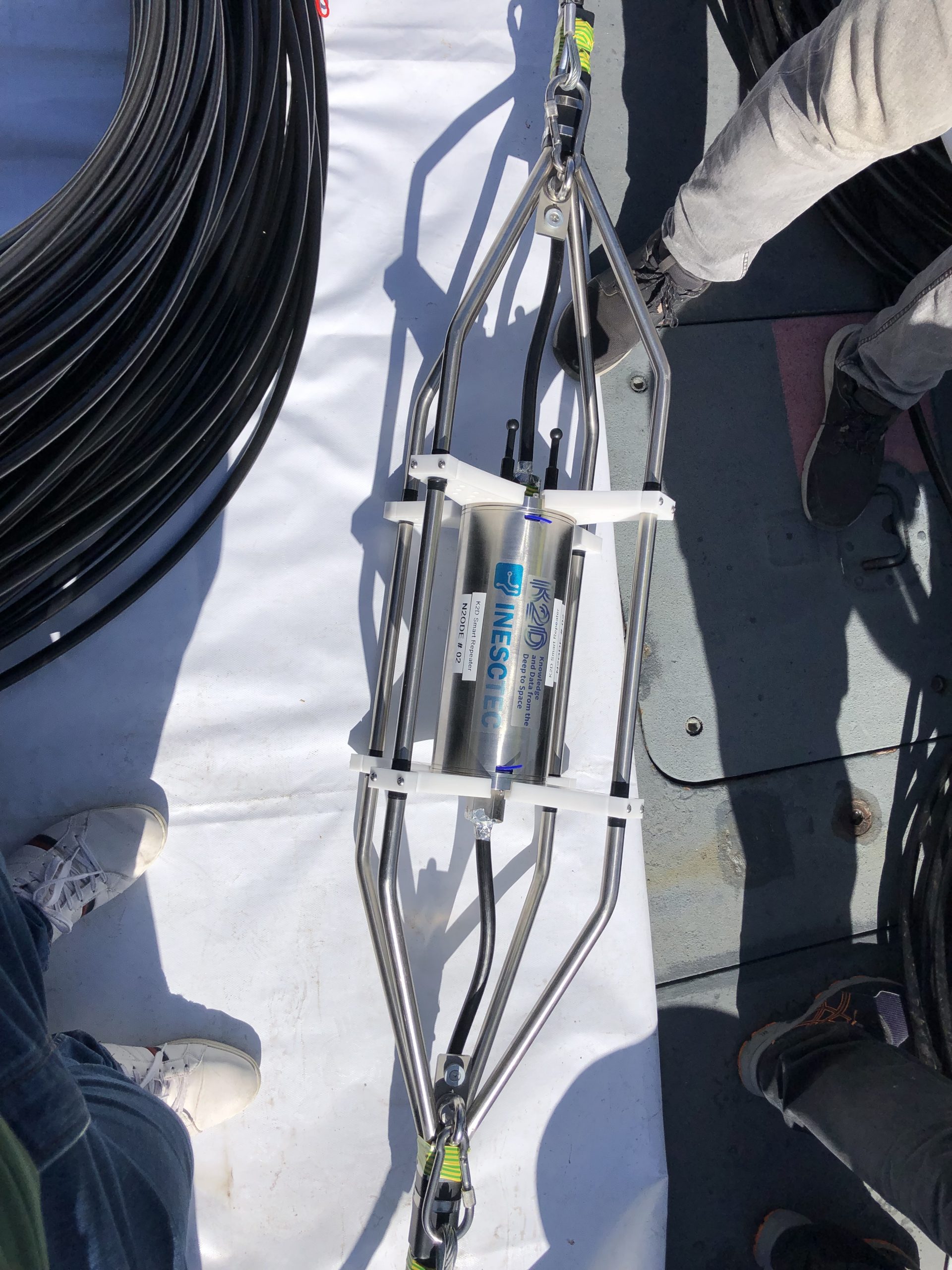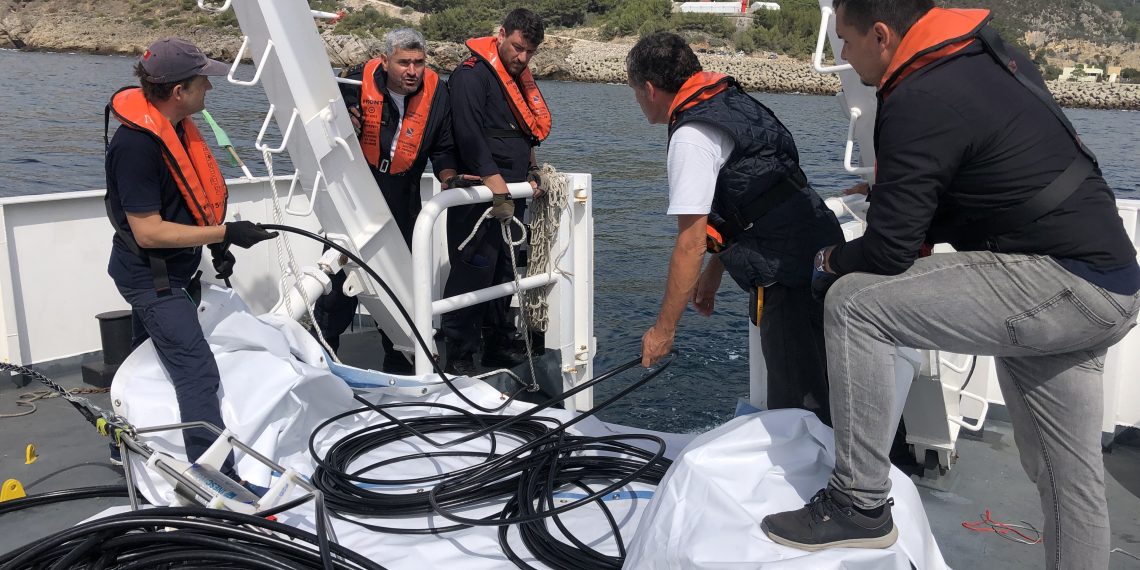The installation of the second prototype of a smart underwater cable (two km long) took place in the vicinity of the Port of Sesimbra, in the open sea and at depths greater than 100 meters – with the support of the Portuguese Navy. The research and development of the three sets of sensors that are installed along the cable to gather real-time data was carried out by INESC TEC, CINTAL and the University of Minho.
The data collection leveraged by the system will allow the development of analysis models based on geoinformatics and Artificial Intelligence, to broaden the monitoring process and expand the knowledge of the oceans.
Sesimbra was chosen as the preferred location – like what happened in Tróia, in September 2022 – because it is part of the Infante D. Henrique Technological Free Zone, dedicated to tests with maritime technologies.
 The installation took place within the scope of the K2D (Knowledge and Data from the Deep to the Space) project, a Portuguese-American consortium, led by the dstlecom. The project focused on the development of a global and disruptive ocean monitoring system using underwater cables, capable of operating at different depths – from the deep sea and abyssal platforms to the surface.
The installation took place within the scope of the K2D (Knowledge and Data from the Deep to the Space) project, a Portuguese-American consortium, led by the dstlecom. The project focused on the development of a global and disruptive ocean monitoring system using underwater cables, capable of operating at different depths – from the deep sea and abyssal platforms to the surface.
Both the atmosphere and ocean surfaces are comprehensively monitored thanks to remote sensing systems supported by satellites and airplanes. However, the oceans’ depths remain unexplored by humans, largely due to extreme environmental exposure conditions that are too hostile for conventional sensing approaches.
The technological solution developed within the scope of the project consists of three signal repeaters installed along the cable. In addition to regenerating the signals passing through the optical fibre, the repeaters also feature a set of standardised connectors that translate into improved expandability. In these connectors, it is possible to couple additional measuring equipment, as well as devices dedicated to the operation of robotic vehicles, e.g., wireless communication, navigation and battery charging systems. The experimental installation also includes temperature, pressure, pH, and turbidity sensors, hydrophones and accelerometers. In addition, the cable is connected to the shore, allowing real-time data processing and access. The components and systems of this new cable, namely the acoustic sensors capable of detecting vessels, submarines and/or cetaceans, are operating uninterruptedly since their installation, generating a data volume of more than 60GB per day.
As in the case of the first prototype, the installation of the K2D system took place during the largest operational exercise of unmanned systems in the world, REP(MUS) 2023 (Robotic Experimentation and Prototyping Augmented by Maritime Unmanned Systems), organised by the Portuguese Navy, with the support of the Faculty of Engineering of the University of Porto and NATO.
K2D is a flagship project of the MIT Portugal programme – part of the international partnerships that the Portuguese Government established with North American research institutions –, and it received €1.4M funding.
The project started in 2020, with dstelecom, University of Minho, INESC TEC, CINTAL, University of the Azores, Air Centre, Alcatel Submarine Networks and M.I.T. – in addition to the aforementioned partners.
The researcher mentioned in this news piece is associated with INESC TEC and UP-FEUP




 News, current topics, curiosities and so much more about INESC TEC and its community!
News, current topics, curiosities and so much more about INESC TEC and its community!